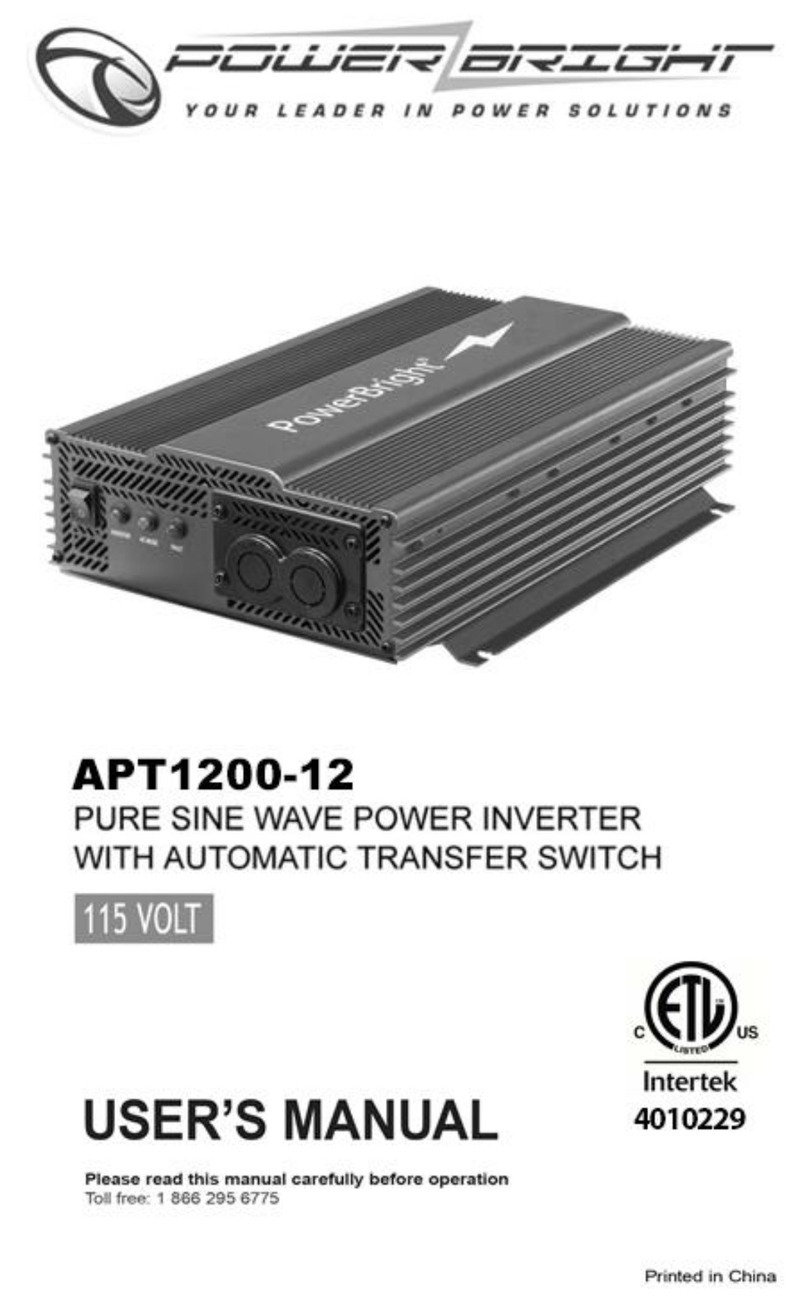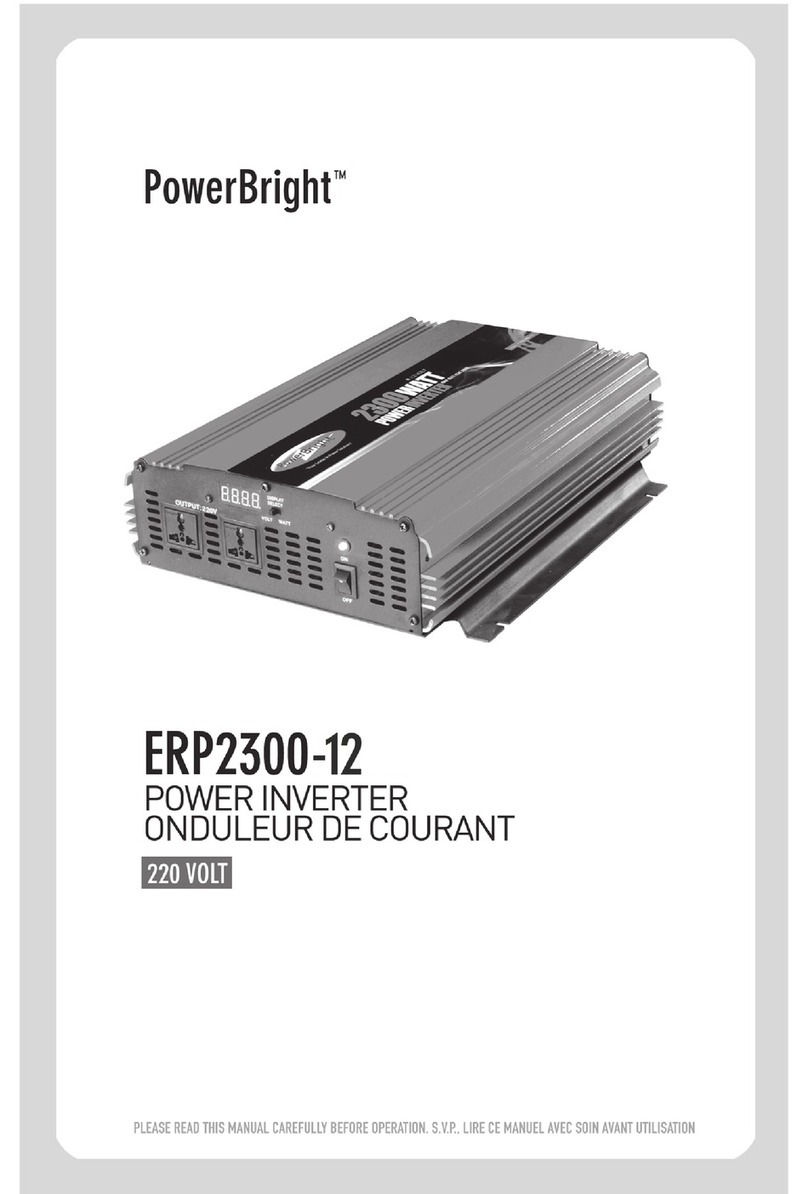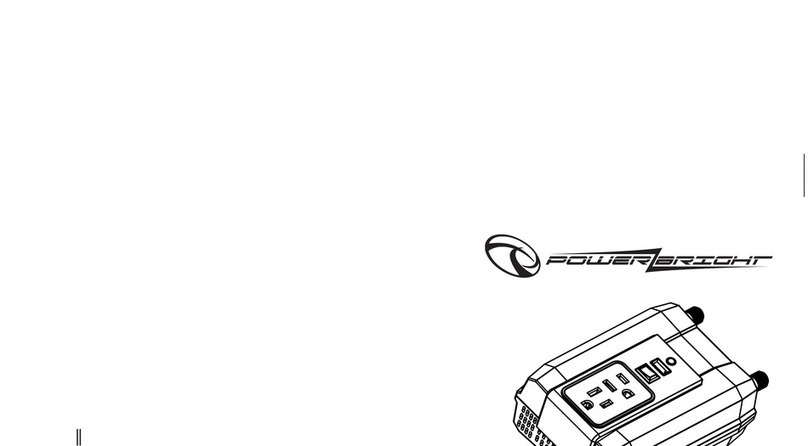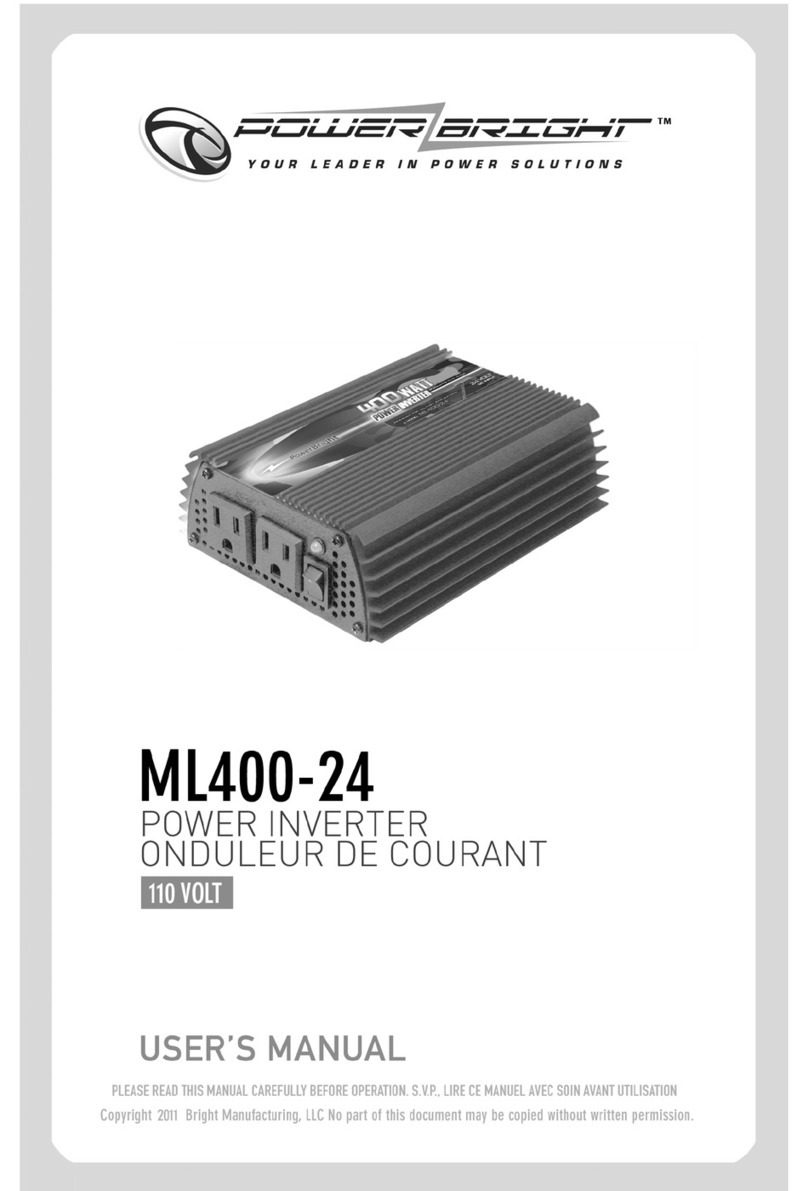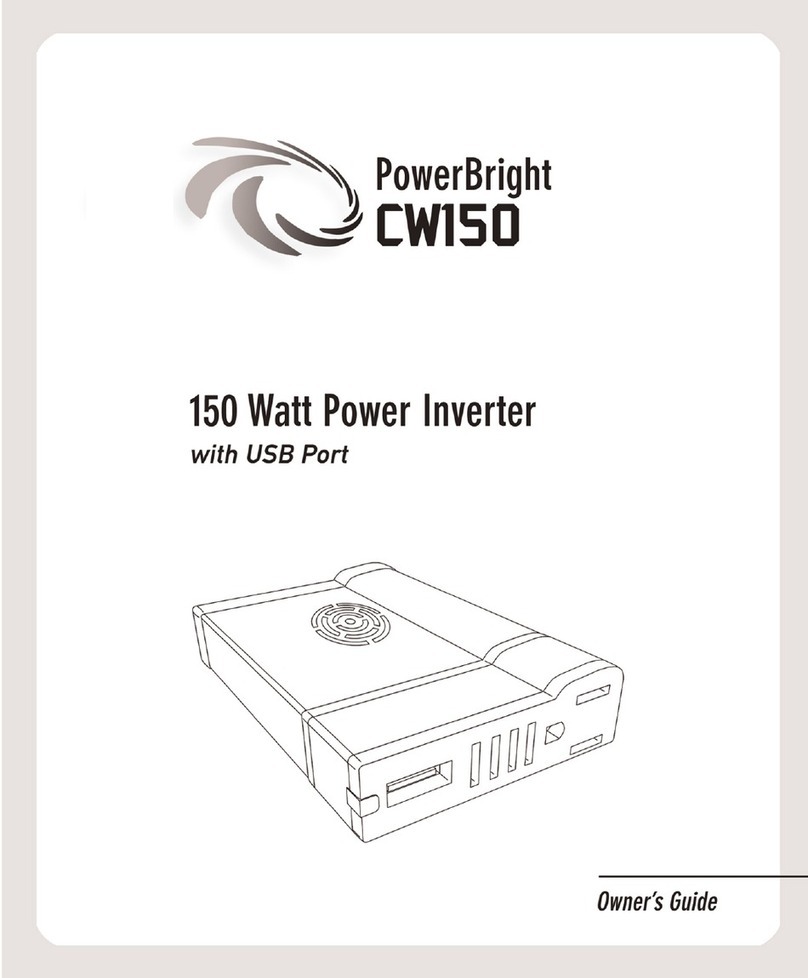
PAGE 6
Making the connection between the Positive terminals may cause a spark as a result of
current flowing to charge capacitors within the inverter. This is a normal occurrence. Due
to the possibility of sparking, however, it is extremely important that both the inverter and
the 12V battery be positioned far from any possible source of flammable fumes or gases.
Failure to heed this warning could result in fire or explosion.
If the cables supplied with your power inverter are too short to allow for placement of the
inverter in a desired location, the inverter may be connected to the power source using a #6
gauge wire. The steps outlined for making the connection and the related safety precautions
remain unchanged.
The audible alarm may make a momentary chirp when the inverter is turned OFF (0). This
same alarm may also sound when the inverter is being connected to or disconnected from
the 12V power source.
Use of an extension cord from the inverter to the appliance or equipment being operated
will not significantly decrease the power being generated by the inverter. For best operating
results, the extension cord should be no more than 50 feet long.
TELEVISION AND AUDIO SUGGESTIONS
Although all our inverters are shielded and filtered to minimize signal interference, some
interference with your television picture may be unavoidable, especially with weak signals.
However, here are some suggestions that may improver reception.
1. First, make sure that the television antenna produces a clear signal under normal operating
conditions (i.e., at home plugged into a standard 110 AC wall outlet). Also, ensure that the
antenna cable is properly shielded and of good quality.
2. Change the positions of the inverter, antenna cables and television power cord.
3. Isolate the television, its power cord and antenna cables from the 12V power source by
running an extension cord from the inverter to the television set.
4. Coil the television power cord and the input cables running from the 12V power source to
the inverter.
5. Attach a Ferrite Data Line Filter to the television power cord.
•
•
•
•






